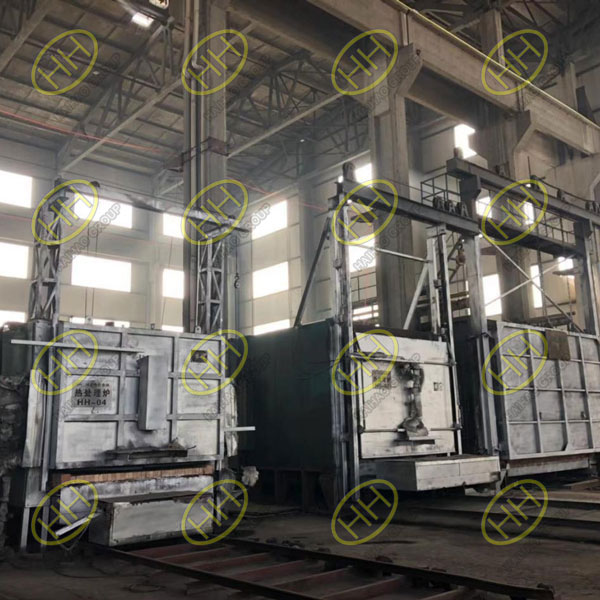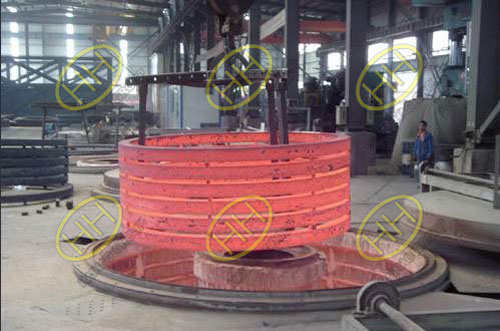Methods for preventing and controlling heat treatment deformation
What Causes Heat Treatment Deformation?
During heat treatment, metal parts such as flanges or fittings can change shape. This happens because of uneven heating or cooling, creating internal stresses. Other reasons include poor fixture design or the wrong choice of heat treatment process. The main factors are:
Thermal Expansion and Contraction: Metal expands when heated and contracts when cooled. If these changes are not controlled, deformation happens.
Bauschinger Effect: This phenomenon makes metal weaker in compression after tension, or vice versa, which can lead to bending or twisting.
Asymmetric Heating: Uneven temperature distribution causes one part to shrink or expand more than another.
Heat treatment deformation is a common challenge in manufacturing, and several techniques can be applied to minimize and control it effectively. Below are methods that help in reducing deformation during heat treatment:
1.Reverse Bending Method
For shaft components that are prone to deformation, a pre-applied stress can be introduced before quenching. This involves bending the part in the opposite direction of its expected deformation. By compensating for the bending deformation anticipated after quenching, this method reduces the need for straightening work. It is especially effective for parts with significantly uneven cross-sections.
2.Static Quenching Method
This method requires the quenching liquid to be uniform in temperature and in a static state, just after being stirred. The part is held with tongs and submerged into the quenching liquid. Compared to suspending the part with wire, this approach significantly reduces deformation.
3.Designing Uniform and Symmetrical Parts
Designing the cross-section of components to be as uniform and symmetrical as possible can help reduce deformation. When necessary, slots can be added for process purposes. For example, a boring rod may have two symmetrical slots, with only one being functional, while the other is designed to minimize heat treatment deformation.
4.Using Specialized Quenching Fixtures
For parts with symmetrical cross-sections, specialized fixtures can be used during quenching. After removing the part from the furnace, it is placed in a dedicated fixture and then submerged vertically into the quenching liquid. The fixture restricts the deformation, keeping it within the allowable tolerance.
5.Embedded Salt Bath Heating
While insertion-type salt baths can cause uneven heating and bending, embedded salt bath furnaces provide uniform heating and are more energy-efficient. Fluidized bed furnaces can also be used for even heating.
6.Vertical Suspension for Long Parts
Long parts should be stored in a manner that prevents bending due to their weight. It is best to hang them vertically on racks. During long-distance transportation, multiple inflatable air cushions can be used to balance the parts and provide shock absorption.
7.Stress Relief Before Quenching
For critical parts prone to deformation, such as precision rods, stress-relief processes like annealing or normalizing should be performed before quenching. These processes refine the grain structure and reduce internal stress. During quenching, strict control over the heating temperature is essential.
By following these methods, manufacturers can significantly minimize heat treatment deformation, ensuring the quality and precision of their components.
Case Study: Haihao Group Solution
In a recent project, Haihao Group heat treated 20-inch stainless steel flanges for a petrochemical client. Using optimized fixtures and slow cooling, the final shape tolerance was controlled within 0.2mm flatness deviation—50% better than the client’s standard requirement.
Inspection and Quality Control
To ensure minimal deformation:
- Dimensional checks (before & after heat treatment)
- Visual inspection for cracks or warping
- Ultrasonic testing for internal stress detection
All Haihao flanges undergo full inspection and third-party certification upon request (SGS, BV, LR).
Frequently Asked Questions
Q1: Which flange sizes deform more easily during heat treatment?
A1: Large-diameter and thin-wall flanges are more sensitive due to their low rigidity.
Q2: Is post-heat treatment machining always required?
A2: Not always. With proper process control, correction may not be needed.
Q3: How does slow cooling reduce deformation?
A3: It allows stresses to release gradually, preventing sudden shape change.
Heat treatment deformation can be controlled by using proper fixtures, slow heating and cooling, and predictive machining. Haihao Group ensures tight tolerance and reliable product quality for every flange we produce.
Email: sales@haihaogroup.com



